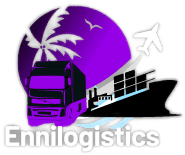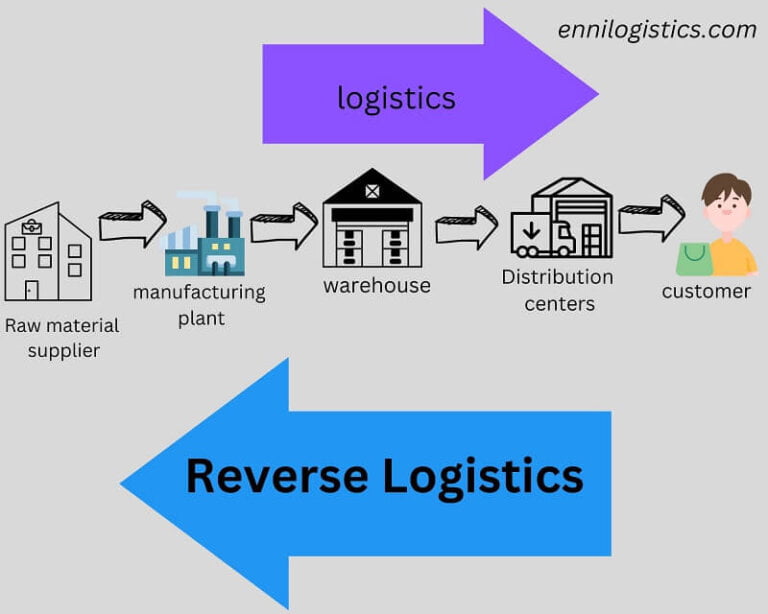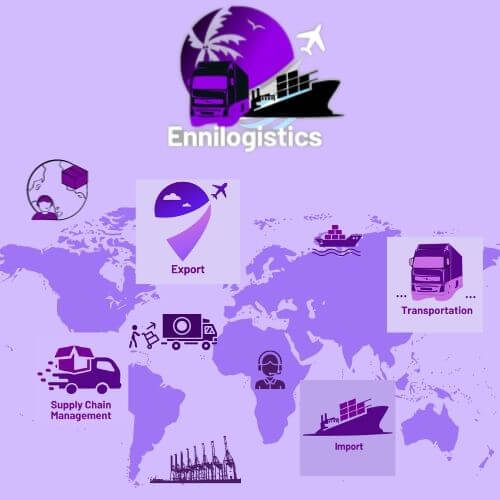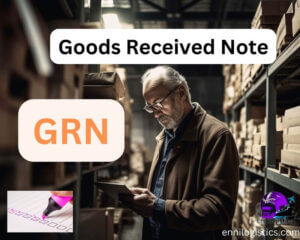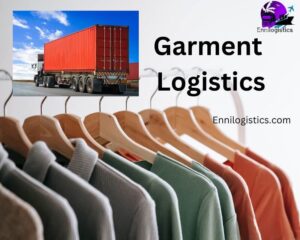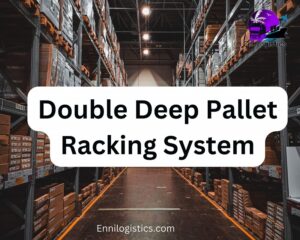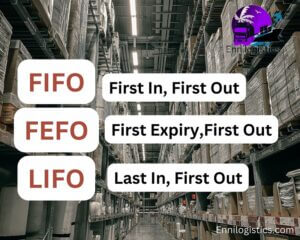Reverse logistics is a famous and valuable concept in the supply chain and logistics field. Most companies are concerned about returns as a major pain point of the company’s operation. But, with the help of the reverse logistics concept, you can realize how to manage the big pain point of the operation and how to add value to return items and enhance your customer’s satisfaction.
What is reverse Logistics?
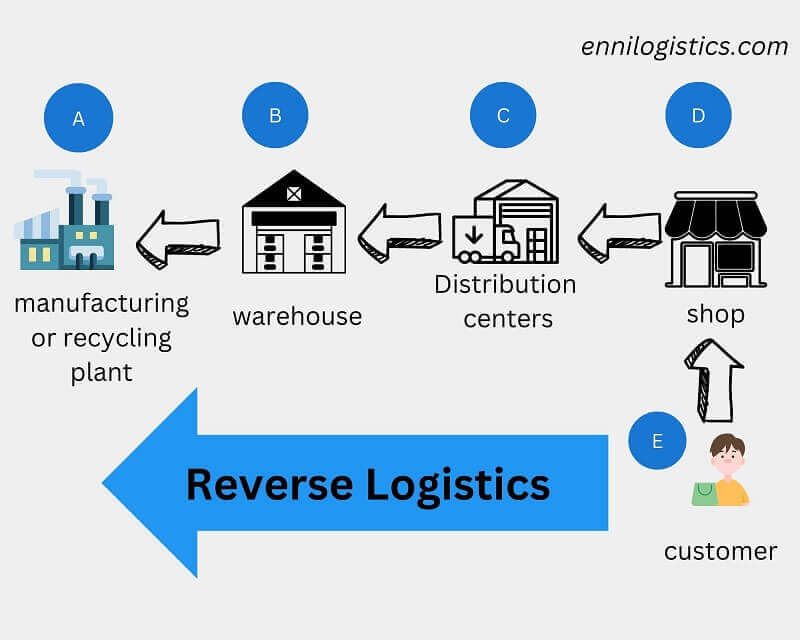
With the involvement of the same process from point B to Point A , called reverse logistics.
In a supply chain reverse process of operational activities is called reverse logistics. Product flow starts with the customer and end with the manufacturer.
So we can say reverse logistics is the “operational process of reverse flow of a supply chain in a cost-effective and efficient.” it is involved planning and executing.
Items are involved with the reverse logistics process, it may be value addition otherwise they should be disposed of.
Objectives of the reverse logistics
- Recoup value and ensure customers repeated.
- Build customer loyalty.
- Repeated business
- Minimized losses regarding returns
Reasons /causes for reverse logistics?
- Customer returns
- Unsold products
- Refurbishing
- End of life/exceeds the expiry date.
- Recycling
- Reuse of packaging
- Remanufacturing
- Delivery failure
- Repair and maintenance
- Warranty claims
What are the types of reverse logistics
- Return management
- Return policy and procedure
- Remanufacturing
- Packaging
- Unsold goods
- End of life
- Delivery failure
- Rentals and leasing
- Repairs and maintenance
What are the benefits of reverse logistics optimization
- Reduce cost
- Customer satisfaction increase
- Quick and efficient service
- Brand
- Reduce waste
- Sustainability
5 R’s of Reverse logistics
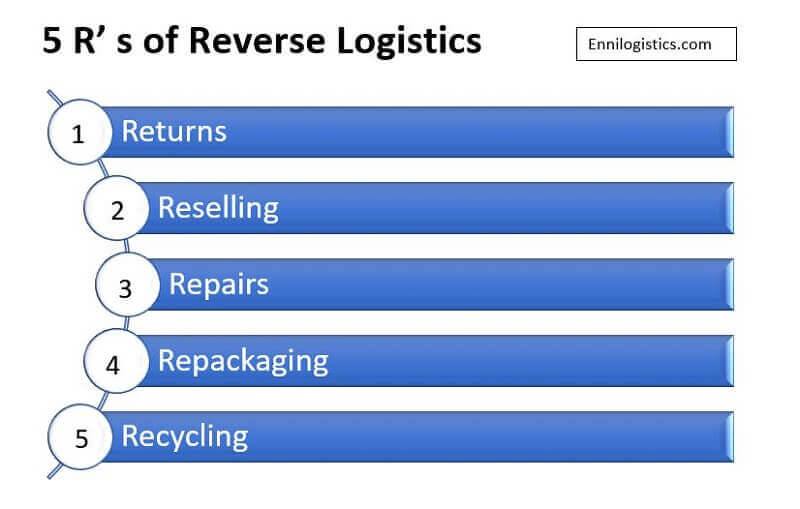
- Returns– return items have 2 types. One is customer return due to customer dissatisfaction. The second type is outlet returns because of not sealing products. It may be seasonal products or other products that are at the end of life or any other reason.
- Recalls-If the company identifies product quality issues after the delivery to the sales outlet. Items are recalled to the manufacturing center or warehouse for the fixed quality problem. It’s called a recall.
- Refurbishment or repair-If there are damaged return products for the purpose of repair or refurbishment. It may warranty claims of customers.
- Recycling-Seriously damaged products or unusable products need to send back to the company for recycling.
- Repackaging-Most of e-commerce or online shopping business has to face delivery failure, in that situation delivery failure items are transported to a center and repackaged items to another customer.
Difference between forward Logistics and Reverse Logistics?
In general forward logistics consist of product development, material sourcing, manufacturing process, transportation and distribution, and also last-mile delivery process.
But reverse logistics is moving products and materials back into a supply chain by return delivery process.
| Forward Logistics | Reverse logistics |
| Relatively easy to forcast | Difficult to forecast |
| Product quality is same | Product quality is the same |
| Product packaging is same | Product packaging may damaged |
| Destination or routing clear | Destination or routing not clear |
| Pricing relatively same | Pricing depends on many factors |
| Speed of delivery is important | Speed of delivery is not a concern as an important |
| Delivery costs are more visible | Delivery cost is not visible and unfredictable |
| There are any distribution centers from one manufacturing plant | Many ways to collect returned products to one distributions points |
| The product life cycle is manageable | The product life cycle is very complex and can not be manageable |
| Marketing strategies are easy to identify and implement | Marketing is more complex due to several factors considering |
| Inventory management is easy | More complicated inventory management |
| Visibility of the forward logistics process is more clear and transparent | The visibility of the reverse logistics process is less transperant |
Challenges of Reverse Logistics
Most of the returns are online purchasing industry. When compared to traditional online shopping percentage of the returns are high. Approximately 40%-60% of the returns are online shopping items.
Some companies are returns concern as a pain point of their operation or supply chain. Here we are going to identify challenges of the reverse logistics.
Handling cost increasing
need to allocate space for the returns in the warehouse
unplanned nature of return items-Returning items can’t be forested before so if you received more returns at one time it is a big issue for the company because need to allocate the warehouse and other operational costs.
How to protect your brand with Reverse Logistics?
Customers buying your product means customers trust your service and brand name. If any case customer has to return products due to unsatisfaction of products may quality issues or damages during the warranty claims or other reasons.If your company provides reverse logistics services definitely customers happy and trust your brand. so customers will come again to buy your branded products, If customers do not have to return facilities customers lost their money as well as the company loses that customer. So it will definitely badly affect your brand name. If customer satisfaction increased, definitely customers will come to your shop again and again.
with the improvement of technology and social media, unhappy customers are sending negative experience as a comment, and due to that your brand name’s ranking go down. as well as negative customer reviews affect new customers selling because nowadays most customers are reading reviews and checking rankings before they buy goods or services as a habit.
The reverse logistics process is a method of saving your customers as well as a brand name in the industry.
Strategies to Optimize Reverse Logistics
1. Outsourcing
the simple meaning of outsourcing is giving authority to another company to return collection and reverse the logistics process. It is advantageous for your core business. Because you can attend and can focus on main business only. Returns and reverse logistics part is handled by another outsourced company. It is a benefit to your core business as well as it is good to reverse the logistics process also. Because outsourced companies should specialize in return management and on behalf of you that company is doing all the things regarding the returns of your company.
2. Automation
when automating warehouse operations you can reduce and manage traditional issues of reverse logistics. such as response time, forecasting errors, labor costs, fraudulent returns, etc.
3. centralized return centers
These types of centers are specialized for returns only. Allocating a special warehouse or center for return items it is easy to handle returning items and it also helps to maintain and next step of the reverse logistics process. Such as repackaging, relabelling, recycling, etc.
4. review/revise/optimization of the return policy.
Reverse Logistics process
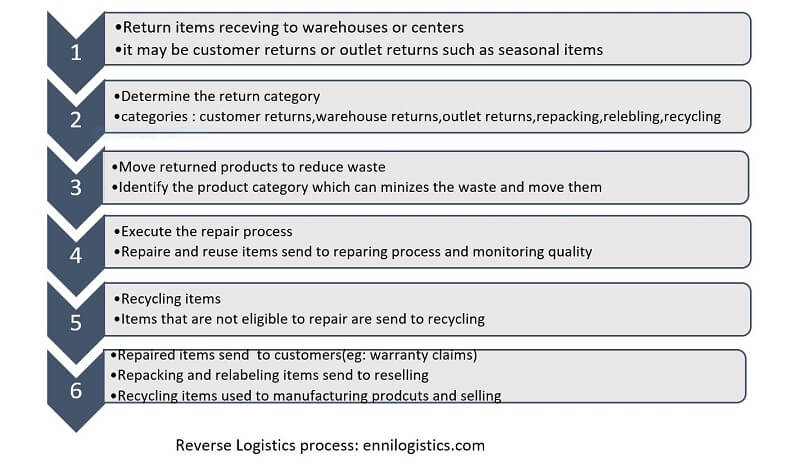
- Return to warehouse or centers
- determined return category-customer return or warehouse or outlet return by a company. main types of categories are repacking, relabelling, recycling, etc.
- move returned products to reduce waste
- Execute the repair process
- Recycle items -what are the products unable to repair or resell
- reselling or remanufacturing
Above mention, the process is the basic process of reverse logistics, but there is vary with the company and types of products.
Future of Reverse logistics
High-quality reverse logistics process makes competencies and sustainability in the supply chain and business.
Videos related to reverse logistics
You may like to read,
What is Third-party Logistics(3PL)?:Everything you need to know
What is Logistics? simple explanation with examples
7 Rights of Logistics (7R s): For learning Logistics Easily
How to start a 3PL (Third party Logistics) company?
How to make your last-mile delivery super easy
Warehouse Management & Warehouse Management System: Everything you need to know
